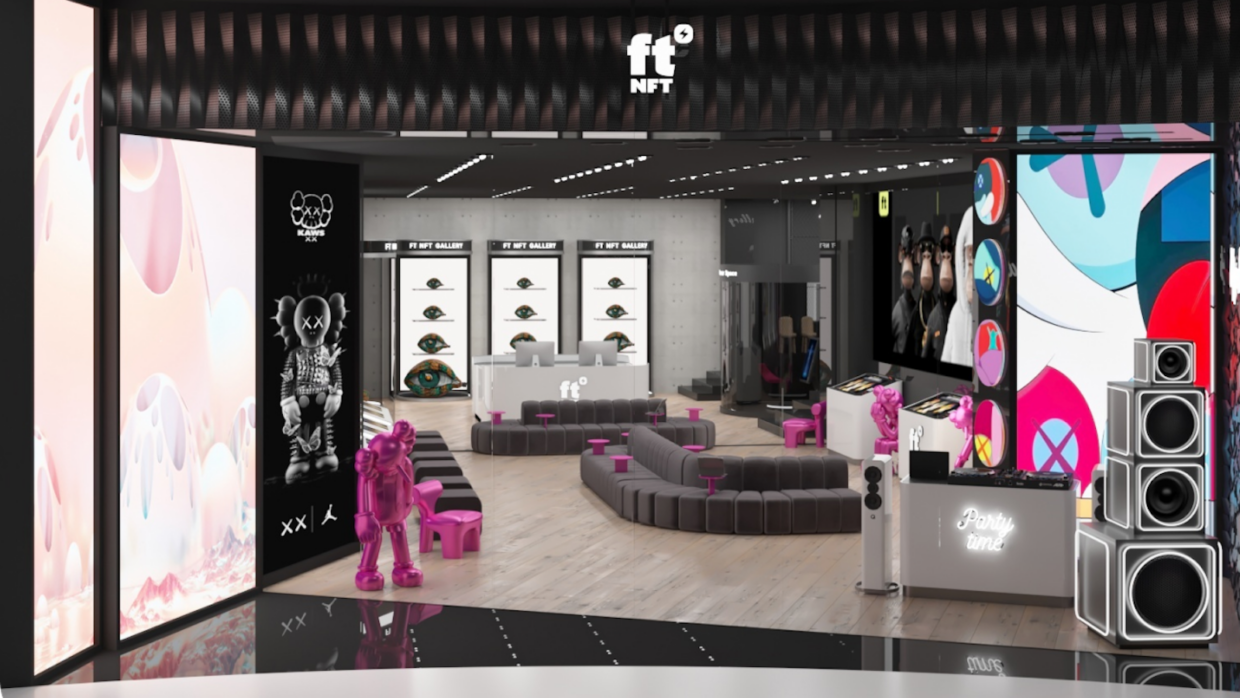Is a new venture in Dubai the future of NFTs or simply a gimmick doomed to failure?
Recently, ftNFT, the NFT marketplace of the Web3-driven ecosystem Fastex, opened two physical NFT stores in Dubai that offer merchandise, such as T-shirts and mugs, that feature NFTs also up for sale. The stores include a booth equipped with a 3D scanner that quickly creates avatars that can then be used to explore the FastexVerse metaverse. In addition, the stores exhibit physical artwork from the AKNEYE NFT series.
Tying NFTs to physical items is not a new concept, having been employed by brands to highlight the exclusivity of their products. Back in 2021, Johnnie Walker dropped NFTs that were tied to rare bottles priced in the tens of thousands of dollars.
More recently, Hublot teased a collection of 13 NFTs created by Takashi Murakami, each tied to a physical watch, which will make their official debut at the Watches & Wonders 2023 trade show in Geneva. Meanwhile, to celebrate its 200th anniversary, Louis Vuitton announced an NFT collaboration with Japanese artist Yayoi Kusama that will give customers access to 10,000 digital assets that can be exchanged for real-life copies.
However, the ftNFT stores take a different approach to crossing the digital-physical barrier. Their primary aim, aside from promoting the marketplace, is to let non-crypto-enthusiasts — i.e., casual mall consumers — learn more about NFTs and demonstrate the real-life benefits of NFTs.
Thus, more people can potentially be drawn to purchase NFTs. This is similar to Chinese sportswear giant Li-Ning’s BAYC drop in early 2022, which saw BAYC #4102 being featured on commonly-available items such as T-shirts and Frisbees.
Although it is too early to evaluate the commercial and cultural impact of the stores, it could provide much-needed momentum to an NFT sector that is currently in the grips of an ongoing “crypto winter.” As more people understand and accept NFTs as a genuine form of artistic expression, NFT marketplaces can theoretically increase their legitimacy in the eyes of the public and expand their potential consumer base.
However, an over-reliance on physical items to pique consumer interest could also lead some consumers to view NFTs as no different than other digital products, such as movies and video games, that are dependent on physical promotional events. Therefore, crossing the physical-digital realm also requires a delicate balance.



